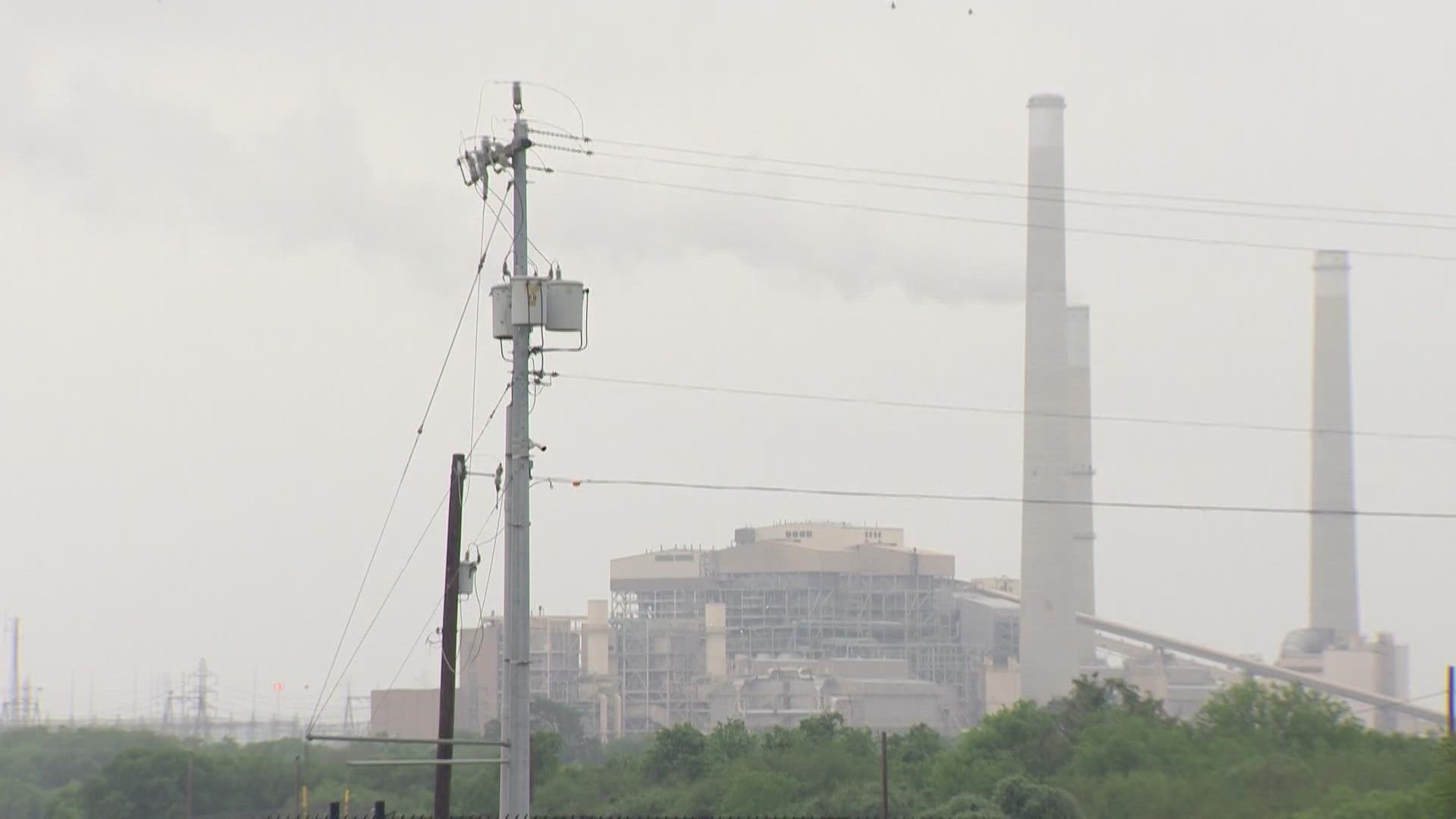SAN ANTONIO — CPS Energy trustees will soon decide how it will power the greater San Antonio area in the medium-to-long-term future.
Utility leaders told San Antonio City Council on Thursday about one of its likely plans to use both renewable and non-renewable energy for the next seven years.
One method of power generation, meanwhile, is going to be phased out completely.
“The clock is ticking, there’s urgency on our part… you don’t just flip a switch and a new power resource comes online,” CPS Energy CEO Rudy Garza said.
To power the city through 2030, the utility’s rate advisory committee recommended its plan to combine natural gas, solar, wind and energy storage, phasing out coal in 2028.
Environmental groups like the Alamo Group of the Sierra Club are mostly happy with the proposal.
“This is something that’s going to be good for the citizens of San Antonio in many different respects. We are disheartened, though, (that) we will be depending on natural gas,” said Alan Montemayor, chair of the group, during the public comment portion of the meeting.
As part of the proposal, the coal-burning Spruce 1 plant would shut down by 2028 while Spruce 2 would operate through 2065 as a gas plant. Both are located along Calaveras Lake.
According to their presentation, the move would require approval from ERCOT and the board of trustees.
The utility’s rate advisory committee recommended this plan, called P2, over P9, which alternatively focuses on renewable energy and a hard transition from gas-generated power. According to CPS Energy documents, that second plan involves reliability and financial risks.
Councilwoman Ana Sandoval pointed out that CPS Energy and other utilities paid exorbitant prices for natural gas during Winter Storm Uri in 2021.
“When you look at the impact on reliability during extreme events, that’s where P2 and P9 diverge,” Garza responded.
Documents state that, under P2, the utility would have less financial risk during extreme weather conditions compared to the P9 plan. Documents state that buying energy from the market could be very expensive.
The City of San Antonio has a plan to be carbon-neutral by 2050, and the utility states growth in the community would require an additional 115 megawatts per year of power.
The CPS Energy Board of Trustees will discuss rate advisory committee's recommendations at a special meeting on Jan. 23.
>TRENDING ON KENS 5 YOUTUBE:

